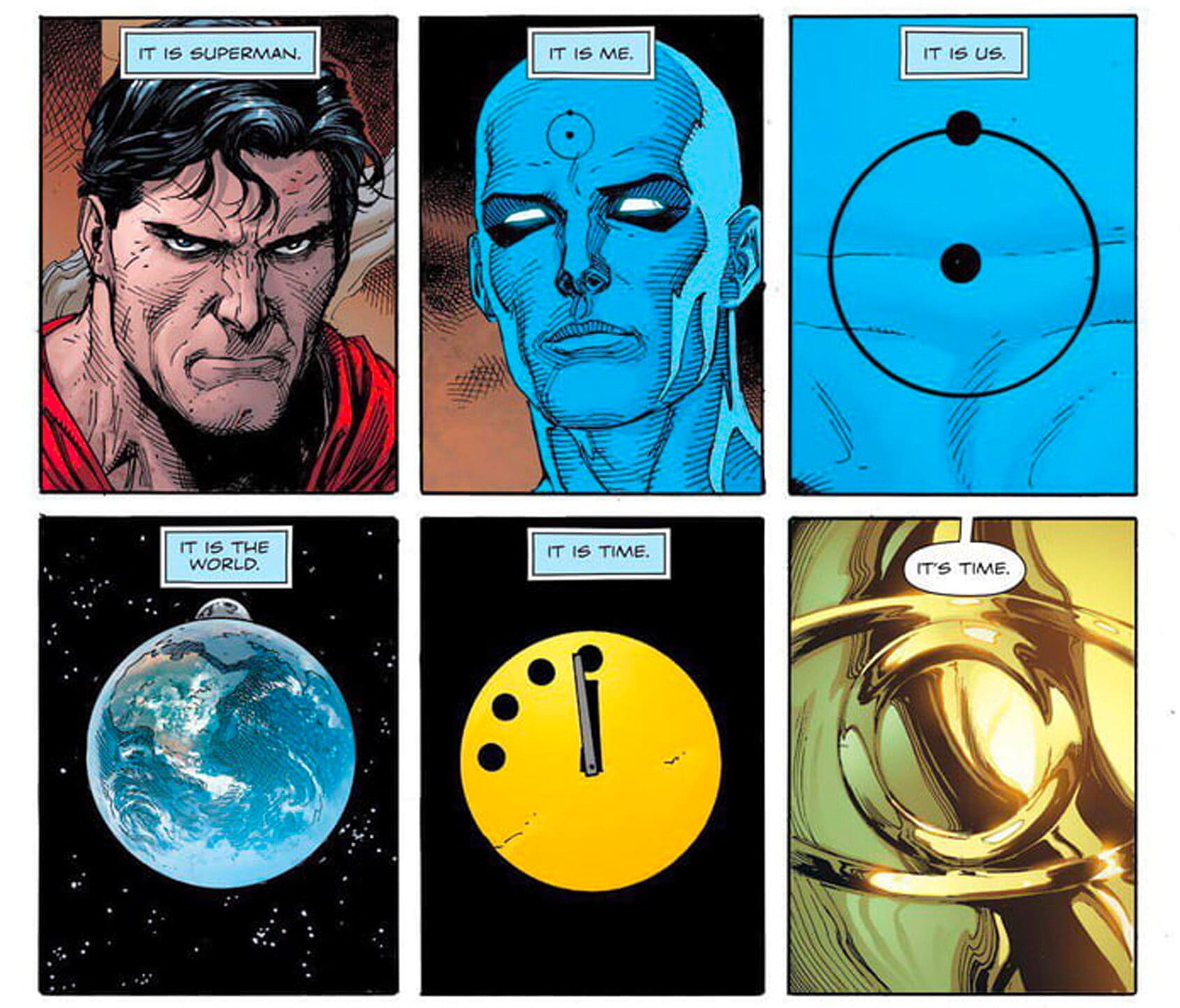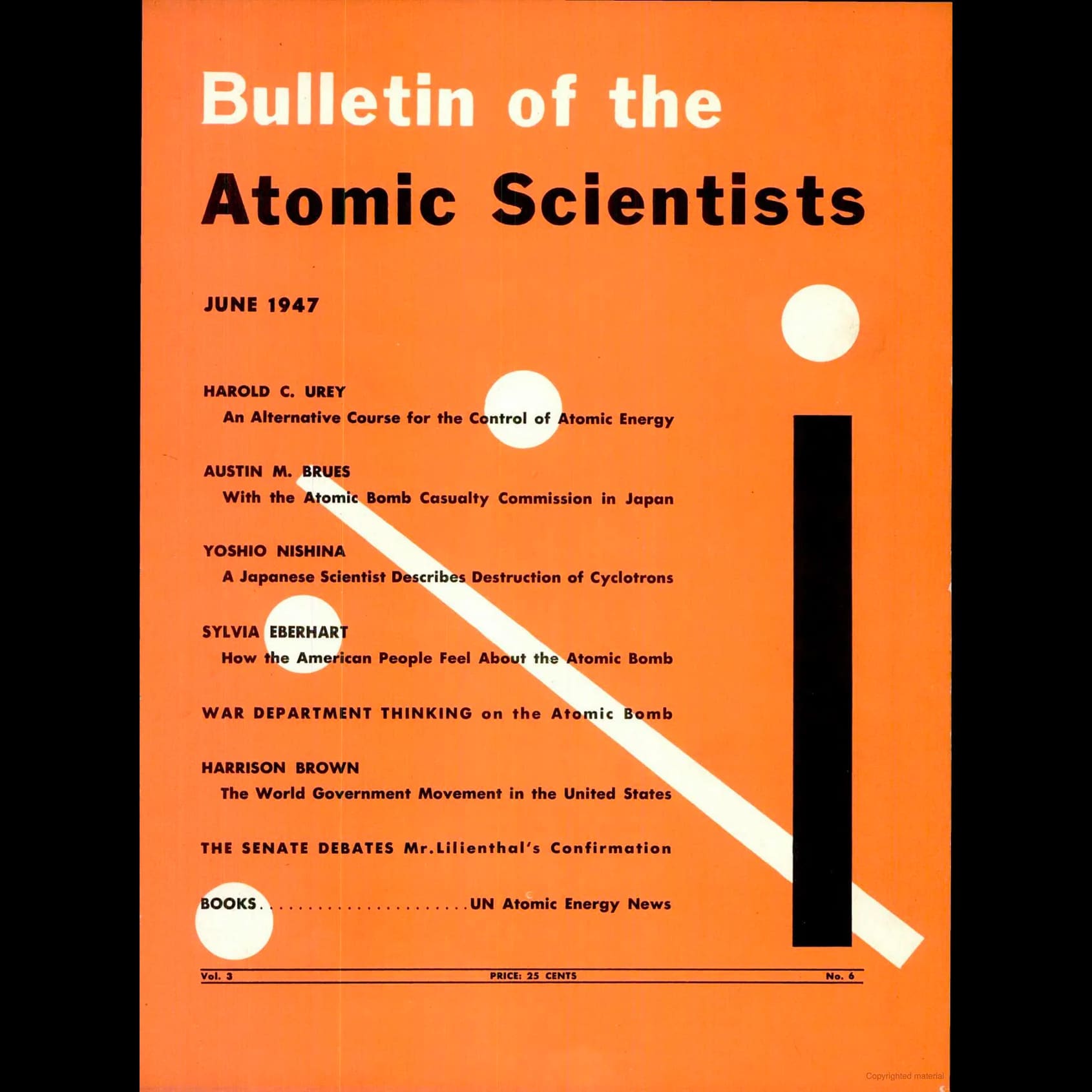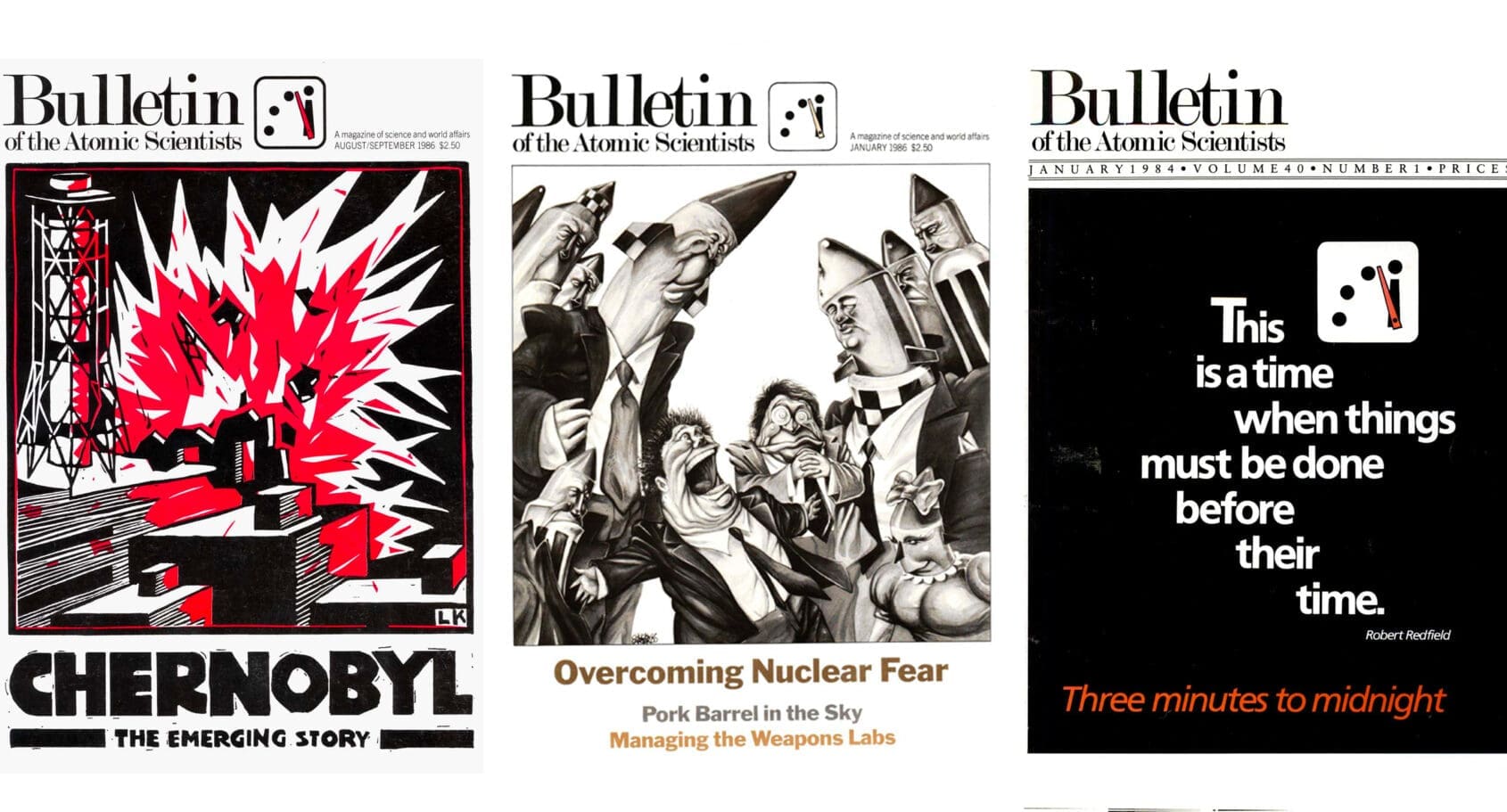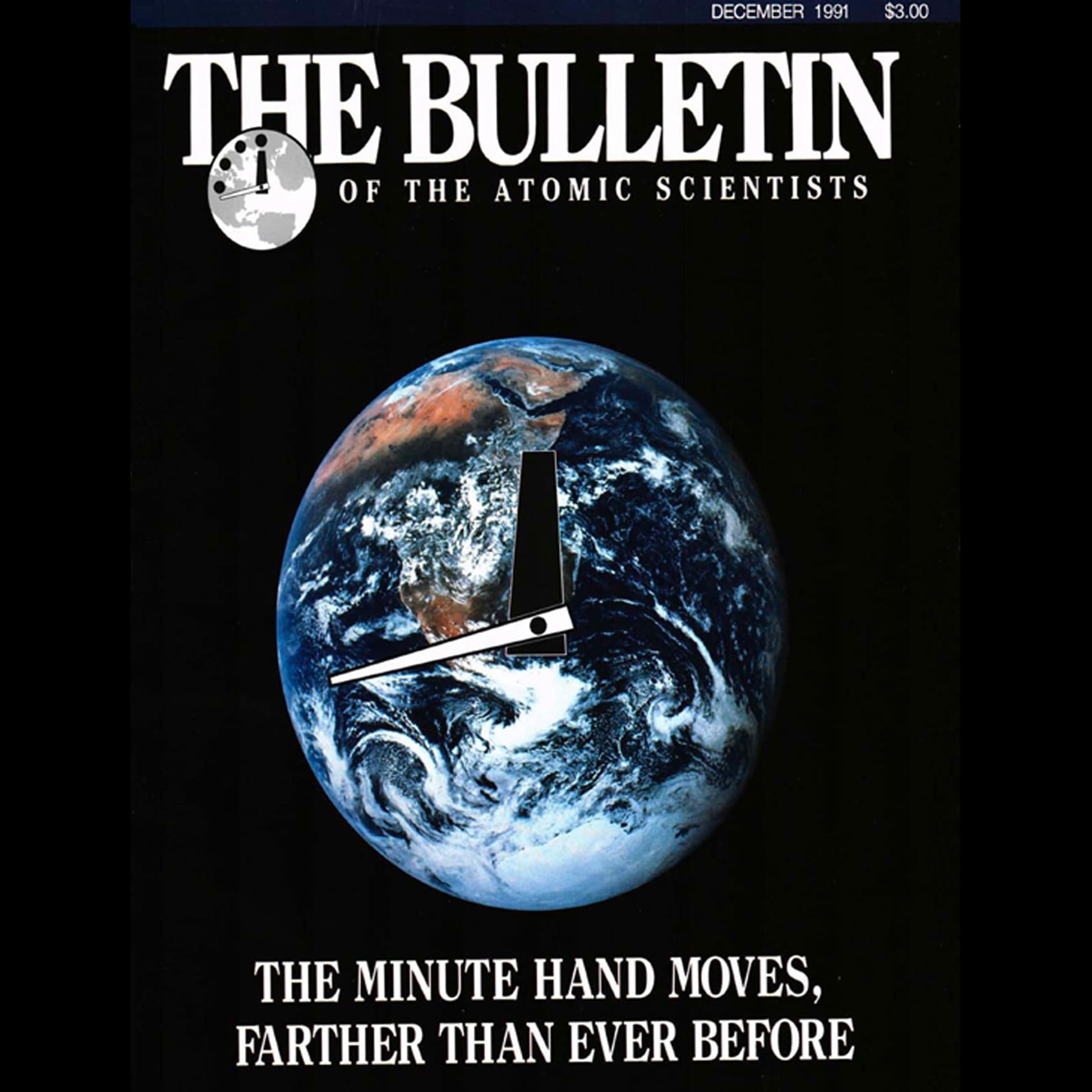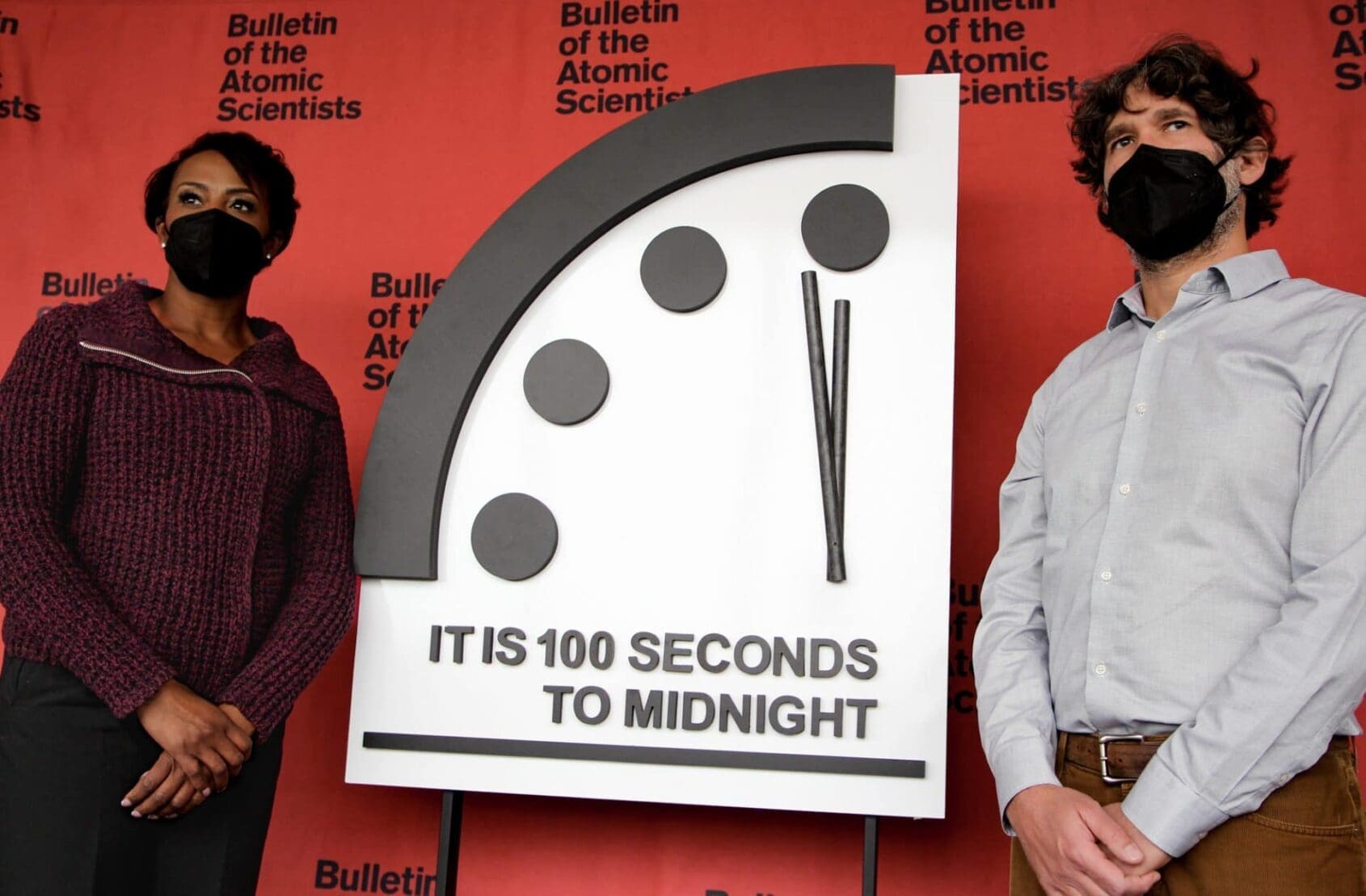IN-DEPTH: The ominous history of the Doomsday Clock
Fergus NashWe’ve covered some pretty strange watches here on Time+Tide, even a bunch which don’t tell the time, but it’s rare that we discuss something that doesn’t physically exist. The Doomsday Clock is a concept and a symbol which has been referenced across plenty of media forms — from 2 Minutes to Midnight by Iron Maiden to Doctor Who, it’s quite likely you’ve heard of it before. But the deeper history and importance of the Doomsday Clock is often lost on the general public, as well as its insight to the human relationship with time.
Put simply, the Doomsday Clock represents the imminence of a global catastrophe caused by humans. Midnight is symbolic of Doomsday, and the closer the Clock reads, the closer the danger. Although much of the Doomsday Clock movement has been affected by politics and nuclear technology, it also considers factors such as climate change, intrusive technology such as cryptocurrency and artificial intelligence.
The organisation which oversees the Doomsday Clock is the Bulletin of the Atomic Scientists, created in 1945 as a response to the atomic bombings of Nagasaki and Hiroshima, and founded by former Manhattan Project scientists. The Manhattan Project was a pivotal moment in history, not only because it led to the first ever nuclear weapon tests, but also because mass extinction had now become a genuine concern to those who realised the capability of those weapons. The life and regrets of J. Robert Oppenheimer who masterminded the creation of the atomic bomb are well known, even being told in the upcoming film Oppenheimer by Christopher Nolan, but it’s less known that a vast quantity of people who worked on the Manhattan Project actually had no idea what they were working on. After the horrors of the Japanese bombings, it was the duty of science to call for peace and awareness of how easily humanity could bring about its own destruction.
When asked to create a cover for the Bulletin’s issue of June 1947, the artist Martyl Langsdorf created the Doomsday Clock without knowing how significant it would become. It almost seems like it came from divine inspiration, as her other work mostly consisted of landscape and mural oil paintings, but the image of the Clock is simple, almost Bauhaus in design, and oddly chilling. We’re all familiar with the tension a ticking clock can bring, featuring in countless horror and thriller movies as the hero runs out of time to save the day, and that’s exactly the sense that the Doomsday Clock image conveys. Placed at seven minutes to midnight, the time isn’t just about proximity to catastrophe, but a reminder that real action must be taken to halt the countdown, and turn back the clock. In the years following, the cover art of the Bulletin publications would become a hard-hitting statement on the world’s events.
At the time, seven minutes to midnight was quite a drastic declaration. In 1947, the Cold War was well and truly beginning to brew due to the Truman Doctrine announcing the United States intention to prevent the spread of Soviet influence, and the threat of nuclear warfare loomed. The Doomsday Clock had its first update of three minutes to midnight in 1949 when the Soviet Union tested its first atomic bomb, and another minute of advancement in 1953 when the United States succeeded in testing its first hydrogen bomb. The state of the world was dire, with the two global superpowers in an all-out nuclear arms race that escalated throughout the ‘50s and ‘60s. The Suez Crisis, Lebanon Crisis, and of course the Cuban Missile Crisis all contributed to a panic across all communities, however it also led to a series of scientific cooperations and treaties which de-escalated the tensions.
The Cold War raged on through proxies such as the Soviet-Afghan War and more US-Soviet tensions under Ronald Reagan, but the Intermediate-Range Nuclear Forces Treaty of 1988 brought in an era of increasing hope. The Berlin Wall fell, as did the Iron Curtain, and the eventual dissolution of the Soviet Union in 1991 brought the Doomsday Clock to its most forgiving time yet – 17 minutes to midnight. Although the sense of impending doom which had been growing since the 1940s had largely abated from the public consciousness, Martyl Langsdorf’s original message behind the Doomsday Clock continued to ring true as the countdown continued. Nuclear weapons testing continues in India, Pakistan, and North Korea, and despite efforts to disarm, by 2007 there are still approximately 26,000 nuclear weapons in the United States and Russia.
The 2010s brought a shift in attention for the Bulletin of the Atomic Scientists, as nuclear concerns continued among mounting evidence that a climate emergency was underway. Continued lack of action against climate change, an increased interest in nuclear modernisation, information warfare, and the COVID-19 pandemic are all factors that caused the current positioning of the Doomsday Clock as set in 2020 — 100 seconds to midnight. This the closest that the Clock has ever been set, and the Bulletin’s 2022 announcement is a call to action from world leaders, as “the doorstep of doom is no place to loiter.”
This year marks the 75th anniversary of the Doomsday Clock, and its relevance to the global political and scientific landscape can’t be understated. But, despite the overall urgency and darkness of the topics discussed, perhaps the greatest aspect of the Bulletin of the Atomic Scientists is the insistence of hope. No matter how grim our future may seem, the problems that threaten humanity with extinction do have very real and possible solutions that can be acted upon. Their website is a great resource, packed with articles from some of the best scientific minds that pull you in regardless of your prior knowledge. The only thing they still need to do? Release a Doomsday Clock wristwatch.






